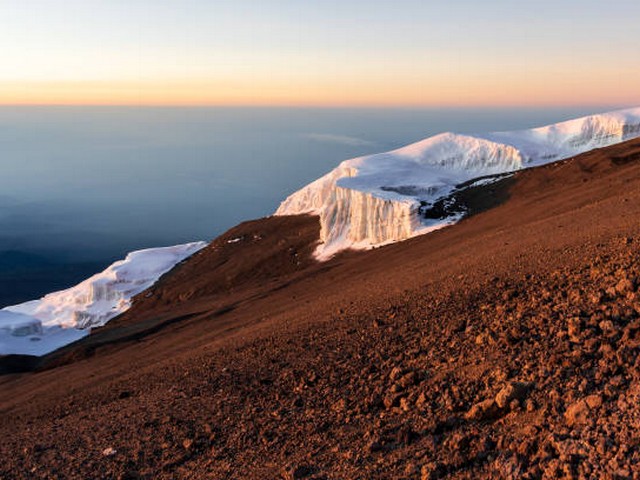How To Avoid Dehydration On Kilimanjaro Treks
Embarking on a trek to the majestic Mount Kilimanjaro is not just a journey through some of Tanzania’s most breathtaking landscapes, but it’s also a profound testament to human endurance and spirit. At Kilimanjaro Centre for Trekking and Ecotourism (KCTE), we understand that reaching the roof of Africa is a dream for many. However, amidst the excitement and challenge, there’s one critical aspect that can determine the success of your climb: staying hydrated. Dehydration on Kilimanjaro is a common yet preventable issue that every trekker needs to manage actively.
Understanding Dehydration on Kilimanjaro
At altitudes above 2,500 meters, the air not only becomes thinner but also drier. This environment increases water vapor loss from your lungs, enhances the likelihood of perspiration, and even accelerates the rate at which your body uses up fluids. Combine this with the strenuous activity of climbing and the often-overlooked colder temperatures, which can reduce your thirst response, and you’ve got a perfect recipe for dehydration.
Why Is Hydration So Crucial?
Hydration affects not just your physical performance but also your altitude acclimatization process. Proper fluid intake helps maintain blood volume, aids in digestion, allows optimal muscle function, and prevents altitude sickness. In essence, keeping hydrated is your secret weapon for enjoying and succeeding in your Kilimanjaro adventure.
Strategies to Stay Hydrated
Start Before You Start
The hydration process begins not on the morning of your trek, but rather from the moment you decide to take on Kilimanjaro. In the weeks leading up to your climb, increase your water intake and monitor your hydration status by observing the color of your urine—it should be pale yellow.
Water Intake on the Mountain
While on the mountain, aim to drink at least 3-4 liters of water per day. Our guides at KCTE always emphasize starting each day with at least 500ml of water and continuing to sip small amounts regularly throughout the hike. Don’t wait until you feel thirsty to drink water—thirst is an alarm for already being dehydrated.
Choosing Your Fluids
Water is king, but it isn’t the only player. Adding electrolyte supplements can be a game-changer, as they help replenish salts lost through sweat. Additionally, enjoying a warm soup can provide both hydration and warmth, making it a double win.
Tools of the Trade
Invest in a good quality hydration bladder or carry multiple water bottles that are easily accessible. This makes it more likely that you’ll drink continuously. Our guides and porters at KCTE are always prepared to help you refill your containers with purified water, ensuring you have safe and sufficient water supplies throughout your climb.
Recognizing the Signs of Dehydration
Be vigilant and aware of the symptoms of dehydration, which can include:
- Dry mouth and thirst
- Unusual tiredness
- Headache and dizziness
- Lesser and darker urine
If you or your fellow trekkers show any of these signs, increase fluid intake immediately and inform your guide. KCTE’s trained professionals are equipped to handle such situations adeptly, ensuring your safety and well-being.
Make Every Step Count with KCTE
Now that you understand the ‘hows’ and ‘whys’ of staying hydrated, you’re closer to conquering Kilimanjaro with confidence. Remember, every successful summit begins with the right preparation and the right partner. At Kilimanjaro Centre for Trekking and Ecotourism, we’re committed not only to guiding you to the top but ensuring you enjoy every step of the journey in good health and great spirits.
Why Choose KCTE?
- Experienced Guides: Our guides are WFR certified and trained in emergency first aid.
- Safety First Approach: We prioritize your health and safety above all else, ensuring peace of mind.
- Customizable Treks: Whether you prefer a leisurely pace or a challenging speed, we tailor the trek to suit your needs and preferences.
Embark on your Kilimanjaro adventure with us, where dreams reach new heights, and every sip of water is a step towards success!
FAQs
Q: How much water should I drink daily during my Kilimanjaro trek?
A: Aim for at least 3-4 liters per day. Start your day with a substantial amount and keep sipping regularly.
Q: Can I drink the water available on Kilimanjaro?
A: Yes, but it needs to be treated. At KCTE, we provide purified water throughout your climb to ensure it’s safe for drinking.
Q: What are the best drinks for hydration besides water?
A: Electrolyte drinks, clear broths, and herbal teas are excellent for staying hydrated. Avoid caffeine and alcohol as they can dehydrate you.
Q: How do I know if I’m dehydrated?
A: Common signs include thirst, dark urine, fatigue, and dizziness. Keep an eye on these and increase your fluid intake if you notice them.
Ready to conquer Kilimanjaro with optimal hydration and expert guidance? Contact Kilimanjaro Centre for Trekking and Ecotourism (KCTE) today, and let’s start planning your adventure with hydration at its heart!




